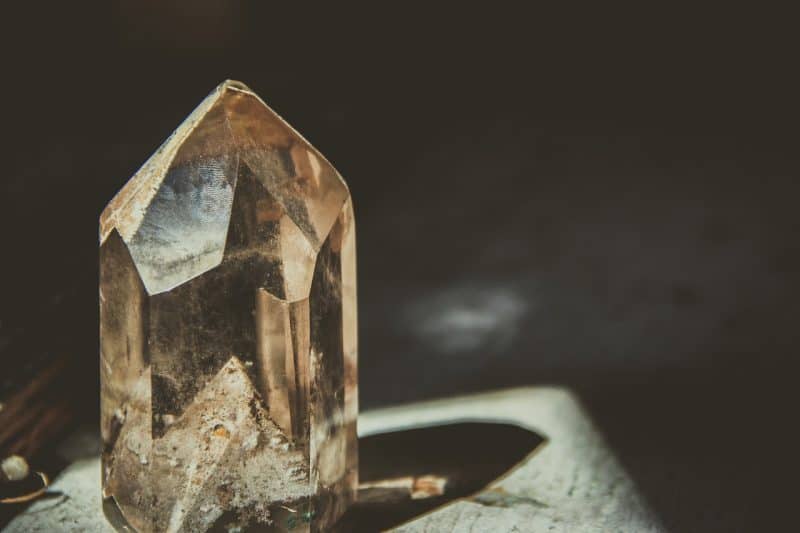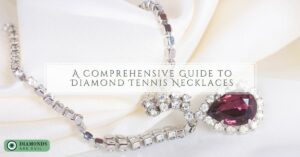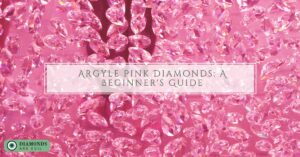Let’s kick off with what moissanite is before we get to another brief description of lab-grown diamonds, after which you will be properly able to see the difference between these two precious stones as we will show you what distinguishes them too.
Let’s get started, shall we?
What is moissanite?
Produced using the mineral silicon carbide, the moissanite is ordinarily utilized as a precious stone option in gems because of its shining appearance, solidness, and lower sticker price. In any case, the history behind this mineral is very intriguing.
In 1893, French researcher Henri Moissan found Moissanite while analyzing some rock samples that originated from a meteor hole. From the outset, he felt that the precious stones were jewels. Considering the very close hardness level of moissanite and precious stones, this forecast wasn’t improbable.
In any case, in 1904, he, in the long run, understood that they were in truth made of silicon carbide and not carbon. Later in Moissan’s profession, he won a Nobel Peace Prize for “his work in disengaging fluorine from its compounds,” and in the end, he had the mineral version of silicon carbide named after him.
How is moissanite made?
Unfortunately, silicon carbide is quite uncommon. It has only been discovered in a couple of different places, including meteors, the Green River Formation in Wyoming, and in some cases, even as considerations inside diamonds.
Because of this uncommonness of naturally silicon carbide, all items produced using this mineral presently are made by utilizing a lab-grown synthetic variant of it.
Advantages of moissanite
Considering the brief overview and history of the moissanite we have discussed, you may be asking what benefit does the moissanite have? Why are they special?
Funny as it may sound, moissanite is not diamonds, but why are we comparing it with a diamond in the first place? Shouldn’t it be competing with jewels of its class? Well, you should know that they do have their advantages, and for some people, moissanite is their choice, “their diamonds,” so it is not out of place to compare it with one.
For couples that are probably looking to cut costs on a few things or are conscious of prices, moissanite can be an extraordinary choice for their wedding ring and/or a good gemstone choice in their engagement ring. Moissanites are usually estimated based on their size and on the off chance that they are Premium or Super Premium.
As noted earlier, moissanite is extremely rated highly. It is basically around 0.75 less than a diamond, this gemstone is very sturdy and an incredible choice for somebody who either uses their hands to work a lot, that is someone who does a large amount of project with their hands or doesn’t plan to take off their ring for exercises, for example, working out.
Be that as it may, they’re not at a similar level as real diamonds.
Lab-Grown Diamonds
Alright! We have explored a little about moissanite and seen a little bit of what it is and what it is not.
We also have a spine on why you should get one and why you may not need one. How about lab-grown diamonds? There are several articles about lab-grown diamonds already; you may think you will be bored reading this, but Nah, believe me, it will make up for an interesting read. Let us see lab-grown diamonds through the eyes of moissanite as we have seen moissanite through the eyes of a lab-grown diamond.
What is a lab-grown diamond?
A lab-grown diamond is a mined diamond that is developed in a lab utilizing innovative front-line techniques.
The lab-grown diamonds have similar to the natural diamonds in chemical, optical, and physical appearance. You can call it the twin of a natural diamond but from a different mother. Lab-made diamonds are very indistinguishable from the natural ones.
The lab-grown diamonds are real and have a similar shape, color, cut, and carat weight that you’d find among mined diamonds. The major difference is their origin or better still, how and where they were formed.
Advantages of lab-developed precious stones
Just like we discussed the benefits of the moissanite, let’s take a look at just a few of the advantages of the lab-grown diamonds.
Asides their source, lab-grown diamonds have quite a several things that distinguish it from the natural diamonds, which on the one hand, are seen by numerous individuals as massive advantages.
Firstly, they’re the best way to guarantee a full assurance of morally obtained diamonds. Indeed, even with the guidelines that have been set up to help with several negative acts in the mining business, there is still no real way to be certain beyond a shadow of a doubt that your mined diamond was sourced as it was said to be.
Additionally, lab-grown diamonds are an extraordinary advancement in the right bearing. In contrast with mined diamonds, lab-grown diamonds are more user-friendly cos it is artificially produced hence made with the taste of the user in mind.
It was reported that 1 carat of natural diamond makes about 100 square feet of land and just about 6000 pounds of mineral waste. Then again, lab-developed diamonds bring about simply 0.07 square feet of land and just 1 pound of mineral waste for a similar carat size.
The last advantage of lab-grown diamonds that will be discussed is that the synthetic diamonds can be about 20-40% more affordable than the natural diamonds meaning that it is about 20-40% cheaper than the same natural diamond even though they are alike in all ways. For couples or anyone searching for a moderate and reasonably priced choice, yet needs a diamond, the lab-grown diamond is the ideal decision.
When all is said in done, moissanite is an extraordinary alternative for couples that have a constrained financial plan or budget yet at the same time need a glittering gemstone to dazzle with. In any case, it’s essential to note that moissanite is quite dissimilar in comparison to a diamond, either lab-grown or natural.
The lab-grown diamond is still the only jewel that has a similar composition chemically to the natural diamond.







